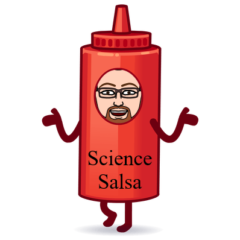
November 14th was world diabetes day, a day to mark on your calendar!
Diabetes complications drastically affect your quality of life and cut your life expectancy. Some risk factors such as age and ethnicity are unavoidable, but type 2 diabetes is often preventable and can be treated by changing what you eat and by exercising more.
This advice is well-known, but the number of new patients is not decreasing. More than 371 million people have diabetes worldwide, and the number of people with diabetes is increasing in every country. In the US, the Latino population has experienced an increasing percentage of people diagnosed with diabetes; from 6.3% in 1997 to 9.3% in 2010 (CDC age-adjusted data). Hispanics are hit harder than other populations in the US. The Office of Minority Health reported that: “Mexican Americans are almost twice as likely as non-Hispanic whites to be diagnosed with diabetes by a physician. They have higher rates of end-stage renal disease, caused by diabetes, and they are 50% more likely to die from diabetes as non-Hispanic whites.” Latino mortality rates caused by diabetes even break the “Latino epidemiological paradox” that seemly gives some protection to Hispanics against the health pitfalls associated with lower average socioeconomic standing. Why?
I do not have an answer. The Latino/Hispanic population is very diverse and difficult to characterize, and is by no means a monolithic block: there are differences in how hard diabetes is affecting Latinos of different heritages: Puerto Ricans are the most affected with 11.2% of their population diagnosed with diabetes; followed by Mexican Americans with 10.2%; and Cubans with 7.3%.
As a Latino, I know I have a higher risk of developing type 2 diabetes than the general population. I can’t change that, but I can cut other risk factors, such as obesity and sedentary lifestyle.
Here is where I get to the part of “we area what we eat”. My grandfather in rural Colombia never had salad. He wouldn’t eat “grass” (salad), because that was cow’s food. His meals were high in calories from starch and fat that he needed for the hard work at the dairy farm, and later as a blue-collar worker for the city of Medellin. Fruit, however, was easily available and he ate it very often. He moved from rural to urban without changing his diet, and I cannot blame him. One of my favorite traditional Colombian dishes is the “bandeja paisa”: white rice with red beans, pork sausage, blood sausage, ground beef, fried plantain, fried pork belly, fried egg, arepa (corn bread like fat tortillas), avocado, and onion-and-tomato sauce. It is delicious, and I highly recommend you to try it, but eating it regularly is a recipe for obesity. The estimated caloric value for a portion of bandeja paisa is 2,000 calories, more than the total recommended daily value for a 200-lb male working in an office. That was lunch for my grandfather after having a hefty breakfast and before a similar dinner. He worked hard and he wasn’t overweight, but after retirement he started gaining weight fast despite being quite active and not having a car.
Latinos living in a city cannot eat as many calories as our grandparents used to eat. We need to adapt our traditional cuisine to a new environment and requirements and balance our meals. While it might seem easy to “abandon ship” and start eating what the rest of America is eating, the prevalence of sodas, high-sugar snacks and fast food don’t make this jump the best option. I believe it is possible to keep our traditions but to improve them and modernize them to reflect new realities. Less fat is not necessarily less flavor, and we have a lot to gain by reducing our chances of becoming diabetic. Enjoying delicious Hispanic recipes with lower calories is possible, and to have fruit and fresh vegetables available at home for snacks is easy. If eating better and being more active will keep us healthier, why not to start today?
I wrote this post inspired by my friend Elisa, from the blog larval metamorphosis. She is the host of this month’s Diversity in Science blog Carnival in honor of Hispanic Heritage Month. Contact her if you want to be involved. Thanks!
Related articles
- World Diabetes Day – An observance that should be on every Latino’s calendar (latinalista.com)
- 371 million people have diabetes globally, about half undiagnosed (cbsnews.com)
- University of Miami Conducts Largest Study of Heart Attacks & Strokes Amongst Hispanics (hispanicallyspeakingnews.com)
- Hispanic health studies (oldwayspt.org)
- Many Hispanics at Risk for Diabetes (hispanicbusiness.com)







